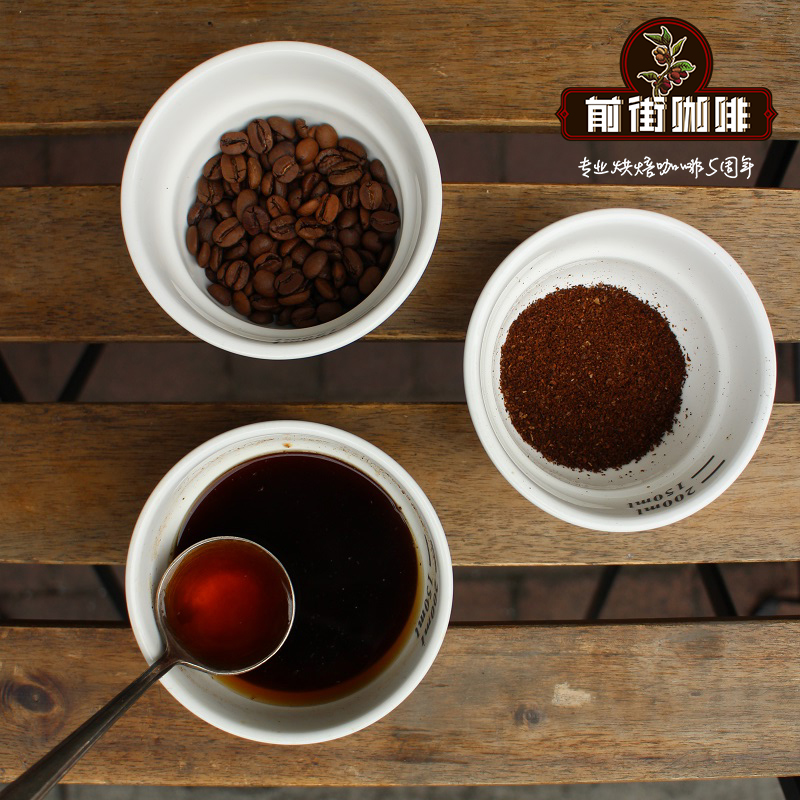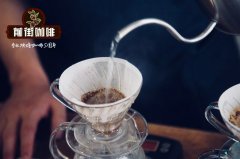Why is ground coffee put at the end before extraction?
Professional coffee knowledge exchange more coffee bean information please follow the coffee workshop (Wechat official account cafe_style)

Baristas determine the grinding size, water temperature and chalk used for a bean, which basically determines the taste of the coffee in the cup, not the effect of brewing itself on the coffee.
Among them, grinding has a great influence on extraction, which is why some of the same bean grinders sell for NT $200 to NT $300, while others can sell for NT $20,000 to NT $30,000, showing subtle differences in taste details.
Household bean grinders basically choose small grinding plates, such as small Fuji, Pegasus, and Pegasus, while commercial bean grinders generally choose larger grinding plates, such as EK43 and Ditting804.
We can compare the impact of the size of the grinding plate on the taste. I believe many employees are deeply impressed by this. When the economic budget is insufficient, they would rather buy a cheap large plate bean mill than an expensive brand small plate bean grinder. In fact, the main reason is that the small plate grinding machine is smaller, has more repeated grinding times, and the grinding plate is more likely to heat up, so the fine powder rate is higher.
When we use a machine with a small grinding plate, it is easy to lose a lot of fine powder after grinding the coffee powder, which is the result of repeated grinding when the grinding plate is too small. The machines with large grinding plates do not have this problem, so the aroma is more likely to stay in the coffee cup.
A professional barista, in the coffee brewing process, will have their own very skilled process, boiling water, warm pot, washing filter paper. When everything is ready, you will find that every barista puts the ground coffee beans to the last step.
This is because after roasting, the cell walls of coffee beans become hard and brittle, and after grinding, we make the coffee look like granulated sugar and then begin to extract, but unlike raw beans, roasted coffee beans can be easily crushed with a little force.
After the coffee beans have been ground, we can see through the microscope that the sticky part of the gap between the cell walls will be exposed to the ground coffee powder surface, which is a mixture of coffee soluble aroma and oil. During extraction, these soluble aromatic substances will come into contact with hot water, so that the aroma and oil of the coffee are fully dissolved, forming the flavor and taste of the coffee.
Although coffee beans are more easily extracted after grinding, they can also disperse the aroma or accelerate the oxidation rate of coffee powder. after grinding, the oxidation rate of coffee powder will be dozens of cups faster than coffee beans.
Therefore, in many "coffee extraction tips", as far as possible before the extraction before grinding, can better retain the aroma, is the most important thing.
The selection of grinding particle size of bean grinder is the most important step to affect coffee extraction, so the choice of bean grinder will also affect the overall taste and flavor of coffee. Different grinding plates also have different grinding structure, but from a microscopic point of view, even if the same pair of scissors cut coffee beans into general, the cut can not show exactly the same cutting state.
This is because the hardness of each part of the cell wall of the coffee bean is different. During baking, the coffee bean hardens and expands due to the caramelization reaction, which creates a larger gap in the cell wall with different hardness, so as long as there is a certain amount of strength, the coffee bean will break from the most vulnerable place, which makes the shape of the coffee bean irregular after grinding. This is especially evident during rough grinding.
Therefore, there are different cutters in the market, such as flat knives, conical cutters, ghost tooth cutters. Its purpose is to make the grinding of coffee beans more uniform, so as to achieve uniform extraction.
A good cup of coffee is determined by many parameters and data, and grinding is only a very important part of it.
Important Notice :
前街咖啡 FrontStreet Coffee has moved to new addredd:
FrontStreet Coffee Address: 315,Donghua East Road,GuangZhou
Tel:020 38364473
- Prev

Honey treatment, sun treatment, washing, which treatment is most suitable for your taste buds?
Professional coffee knowledge exchange more coffee bean information please pay attention to the coffee workshop (Wechat official account cafe_style), honey treatment, sun drying, washing these on earth what does this mean? Or, perhaps more importantly, which treatment works best for your taste buds? Three main treatments traditionally, coffee has been treated in three main ways: washing, tanning and honey.
- Next

Coffee Garden-Coffea diversa Garden of Divisa Manor, Costa Rica
Professional coffee knowledge exchange more coffee bean information please follow the coffee workshop (Wechat official account cafe_style) Costa Rica is located in Central America, where the climate and soil conditions are very suitable for the growth of coffee beans, coffee has a history of more than two hundred years. Today, Qianjie Coffee would like to introduce to you an estate with a rare variety of coffee, Divisa Manor. Emperor
Related
- Caught off guard! Starbucks '15-year-old store quietly closes!
- Naixue Drink drank a stone and claimed a claim was retaliated by the merchant?!
- What is the difference between a cake filter cup and a V60 conical filter cup? What are the advantages and disadvantages of the flat-bottomed filter cup brewing solution?
- What is the difference between fine coffee powder and medium coarse coffee powder? Do I need to sift out the fine coffee powder for making coffee by hand?
- Why does hot American coffee taste bitter? Difference in proportional concentration between hot American and ice American
- Is espresso stored overnight in the refrigerator harmful to your body? Is frozen coffee better than freshly ground coffee?
- What parameters and proportions of water temperature should be used to grind and brew fresh coffee beans? Why can't I drink freshly roasted coffee right away?
- Customers have "changed" Manner's new products! Shop assistant: Please don't mess around!
- Remove sockets in customer areas at Starbucks stores?! Netizen: I won't go if I really tear it down
- What is the difference between the taste steps of sun-dried coffee and washed coffee? Why is sun-cured coffee sweeter and washed coffee sour?

